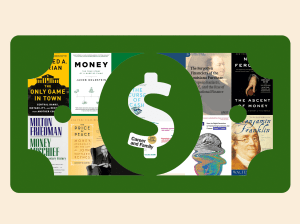
Rose Lincoln/Harvard Staff Photographer
What might COVID cost the U.S.? Try $16 trillion
Economists say national testing, contact tracing could make huge difference
A pair of Harvard economists estimates that the coronavirus pandemic will cost the nation at least $16 trillion if it ends by next fall — timing they describe as “optimistic” — and say that a number that large justifies interventions such as a coordinated nationwide program of testing and contact tracing that would save 30 times its cost.
“It’s almost hard to understand what a number of that size means,” said David Cutler, the Otto Eckstein Professor of Applied Economics. “This is like a hurricane hitting the whole country.”
The calculations were done by Cutler and Lawrence Summers, the Charles W. Eliot University Professor and former U.S. Treasury secretary, and published in a recent issue of the Journal of the American Medical Association. Cutler said they embarked on the project in order to quantify just what is at stake economically as the pandemic grinds on and to evaluate the relative cost of interventions such as congressional bailout programs and public health steps like nationwide testing and contact tracing, which so far have not been implemented.
Cutler said the work lends numbers to what has been widely believed: that the coronavirus pandemic is among the greatest economic calamities in the nation’s modern history. The tally, Cutler said, is four times the damage done by 2008’s Great Recession, outstrips the amount spent on all the fighting — in Iraq, Afghanistan, and Syria — over the 19 years since 9/11, and, according to their analysis, “is the greatest threat to prosperity and well-being the U.S. has encountered since the Great Depression.”
While the economy has often been cited in an either/or argument about whether to take restrictive steps to fight the virus’ spread, such as lockdowns and targeted closures of bars and restaurants, Cutler said the argument that economics actually supports taking even costly steps to shorten the pandemic’s course has been drowned out. That’s because people fearful of infection won’t show up to work or spend money in shops if the virus is spreading widely in their communities.
A report by Harvard economists David Culter (pictured) and Lawrence Summers shows the coronavirus pandemic is among the greatest economic calamities in the nation’s modern history.
Jon Chase/Harvard Staff Photographer

“You’re never going to really get back to work until you deal with the fact that people don’t want to die,” Cutler said.
In the work, funded by the National Institute on Aging, Cutler and Summers highlighted the cost-effectiveness of a nationwide testing and tracing program because other efforts, such as vaccine development and a search for new treatments, already have momentum behind them, Cutler said. Deploying 30 million tests per week might cost $75 billion, according to an estimate by The Rockefeller Foundation, and Summers and Cutler said another $25 billion might be needed to trace the contacts of people who test positive. Together that $100 billion would likely head off pandemic-related costs that are 30 times that, the two wrote.
“It helps to frame the scale of the intervention that’s appropriate,” Cutler said. “This is just massive, and it requires a massive response.”
Cutler and Summers drew on existing data to build their overall estimate. Cutler said they tried to be both transparent about their assumptions and conservative in their estimates. Still, he said, the $16 trillion figure will be affected by the shifting course of the pandemic, increased by things like a major spike in cases and deaths in the coming months and reduced by the release of a safe and effective vaccine widely taken by the population.
[gz_explore id=”315054,303775,314992,313487,313670″ alignment=”right” /]
The two started with the Congressional Budget Office’s $7.6 trillion estimate of economic output lost to the pandemic over the next decade. They added to that the cost of premature deaths, estimating that another 250,000 would die in the next year and adding to that an estimate of COVID-related deaths from other causes, such as untreated heart attacks or cancer due to reluctance to seek medical care. The two started with an accepted statistical value for the cost of premature deaths used in health care and environmental analysis of $10 million and reduced it to a more conservative $7 million to estimate the cost of 625,000 premature deaths at $4.4 trillion.
Another important pandemic impact is the long-term disability of those who’ve survived serious illness. It is believed that one-third of those who’ve survived serious disease suffer ongoing complications. Using existing estimates of the economic impact of chronic obstructive pulmonary disease, a serious lung condition that might be compared to the respiratory effects of COVID-19, they tallied the economic impact of long-term disability to be $2.6 trillion.
Finally, they added $1.6 trillion to account for the pandemic’s mental health impacts, using recent estimates that depression and anxiety have risen from 11 percent of the population last year to about 40 percent since the pandemic struck.
Though the $16 trillion figure is almost unimaginably large, Cutler said the figure is conservative because it does not include things like the pandemic’s differential impact on women, whose jobs are more seriously impacted by the need to juggle demands of being both remote workers and at-home teachers of children learning via videoconference — and who have been leaving the workforce in increasing numbers.
“This is a titanic event, and you just can’t treat it any other way than that,” Cutler said.




